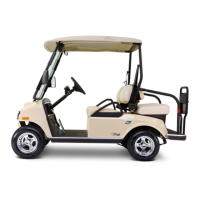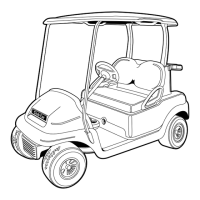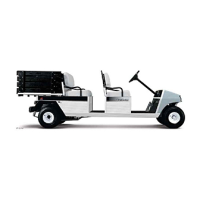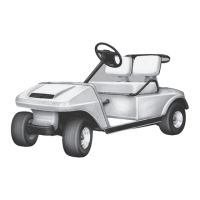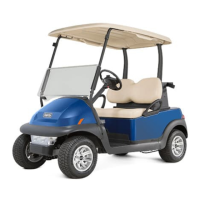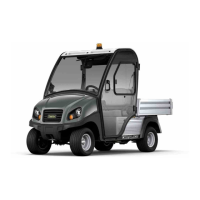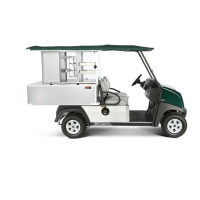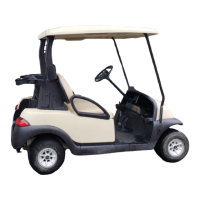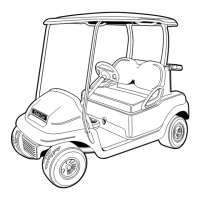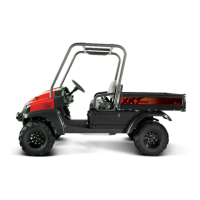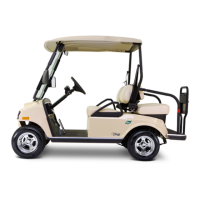
Do you have a question about the Club Car VILLAGER 2+2 LSV and is the answer not in the manual?
| Category | Golf Cars |
|---|---|
| Seating Capacity | 4 |
| Top Speed | 25 mph (40 km/h) |
| Power Source | Electric |
| Drive System | Rear-wheel drive |
| Suspension | Independent front, leaf spring rear |
| Tires | 205/50-10 |
| LSV | Yes |
| Battery Type | Lead-acid or Lithium-ion |
| Charger Type | Onboard |
| Ground Clearance | 4.5 in |
| Payload Capacity | 800 lbs |
| Standard Features | Headlights, taillights, turn signals, horn, windshield |
Details owner responsibilities, manual importance, and vehicle registration.
States warnings regarding chemicals from vehicle operation and maintenance.
Provides approved dealer details and company contact information.
Explains how to locate and interpret vehicle model and serial numbers.
Club Car's liability limitations and right to make design modifications.
Warns about safety risks from vehicle modifications impacting performance.
Indicates where detailed warranty information is located in the manual.
Details compliance with US federal motor vehicle safety standards.
Specifies the EU standard used for measuring vehicle vibration and noise.
Outlines copyright restrictions and usage terms for the manual.
Covers general safety, practice safety, and understanding signal words.
Discusses vehicle hazards, operation warnings, and safety committee roles.
Explains the importance and meaning of safety and compliance decals.
Details safety features like regenerative braking and seat belt usage.
Identifies the physical location of various indicators, gauges, and displays.
Explains battery state of charge and charge indicator lights.
Describes the rear view camera display, its limitations, and operation.
Details how to read vehicle speed, odometer, and trip data.
A visual guide identifying the location of all vehicle controls.
Explains accelerator, brake pedals, and Forward/Neutral/Reverse control.
Covers headlight, horn, key switch, park brake, and run/tow switches.
Describes the operation of turn signal levers and windshield wiper switches.
Overview of the charger, its benefits, and technical specifications.
Lists compliance standards, AC cord, plug, and interlock features.
Explains charger status lights and basic inspection procedures.
Covers charger maintenance, diagnostics, and fault resolution.
Provides vehicle measurements and operational performance data.
Details powertrain components, battery type, and tire information.
Lists vehicle weight limits, capacities, and towing information.
Outlines essential safety and performance checks before operating the vehicle.
Covers starting, stopping, forward/reverse, and parking procedures.
Provides precautions for operating on slopes, obstacles, and through water.
Steps to disable the vehicle safely before performing maintenance.
Instructions for cleaning the windshield, exterior, and interior.
Details routine maintenance intervals, checks, and specific procedures.
Instructions for charging batteries using the onboard charger.
Procedures for safely disconnecting and connecting battery cables.
Steps to prepare the vehicle for towing and transport on a trailer.
Procedures for safely removing the vehicle from a trailer.
Steps to prepare the vehicle for long-term storage, including battery care.
Procedures for bringing the vehicle back into service after storage.
Details the limited warranty terms, coverage timeframe, and exclusions.
Explains warranty voiding conditions, remedies, disclaimers, and claim process.
